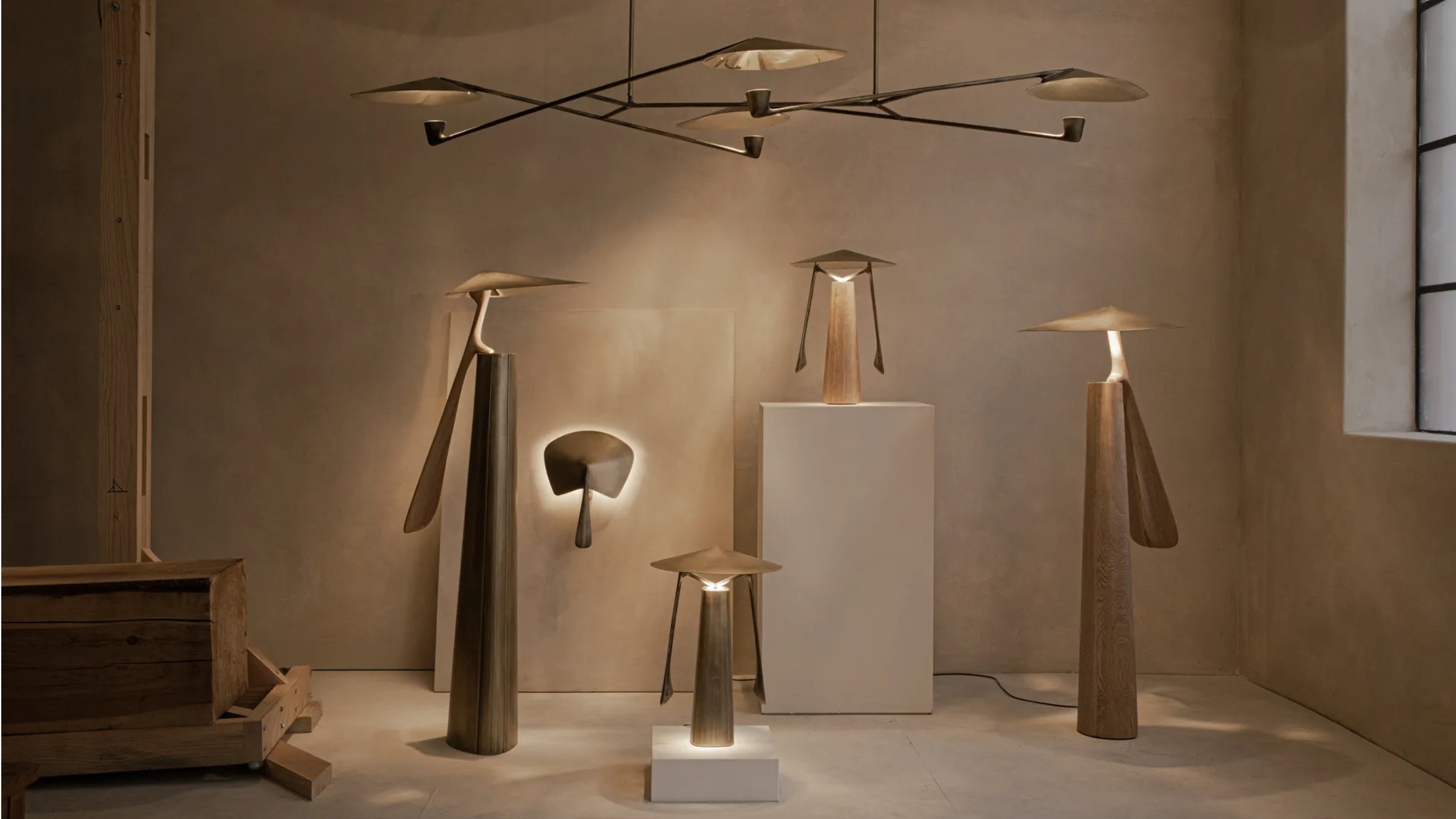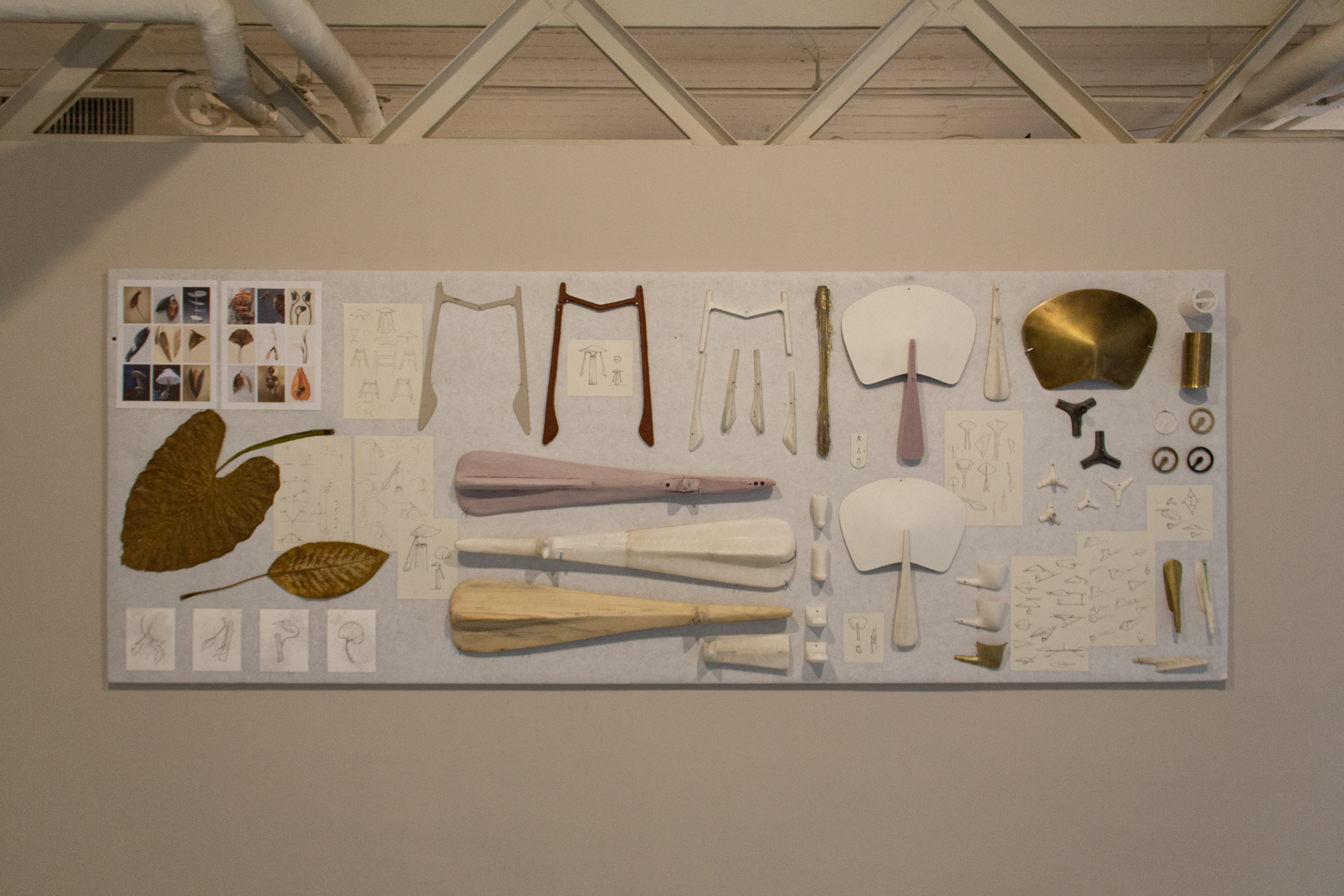
Federico Stefanovich makes bronze lamps inspired by organic forms. Nodding to the shape of plants and fungi, his latest collection, ‘Folia’, strikes a delicate relationship between organic beauty and mathematically precise craftsmanship. Exploring ideas of harmony, play, and community, his work champions the value of design in connecting people, objects, and our shared appreciation of beauty.

Stefanovich’s ‘Folia’ collection is on show at AGO Projects in Mexico City, co-founded by Rudy F Weissenberg and Rodman Primack (both featured in this year's Wallpaper* 400 guide to creative America). The range consists of a chandelier, wall sconces, table and floor lighting, made from cast bronze, worked brass and carved wood, with forms derived from foliage, seeds and fungi. There is a poetic and profound simplicity to the collection; these are evocative shapes that echo familiar organisms from the natural world. Seeing them reconfigured by human hand with craft processes in solid materials, we re-evaluate their beauty; the sculptural objects become talismanic, less ephemeral than the organic matter of their inspiration. Hidden light sources reflect and diffuse the lamps’ glow, accentuating the various material properties for ethereal ambient effect.

Encouraged by his father’s passion for design and craft, Stefanovich studied at Universidad Ibero Americana in Mexico City, before working for Age Salajõe’s EWE Studio on a range of diverse projects. Stefanovich was driven to pursue his own interests in design, and quickly made his name with multiple showings at Design Week Mexico, where he exhibited a series of ever-larger mobiles and chandeliers. Suddenly in demand, the designer founded his own practice and has continued to delve deeper into his imagination and practice ever since.

‘Folia’ is Stefanovich’s latest project and comes after two years of experimentation and refinement. The process involves digital prototyping and the printing of 3-D models. The component parts of the lamps are then sculpted by artisans in Mexico City. Each piece is a work of collective effort emerging from Stefanovich’s precise specifications for his designs, but integrating the unique characteristics of the workshops with which he collaborates.

It is perhaps no surprise, then, to learn that a key tenet in Stefanovich’s work is the desire to celebrate relationships. In his eyes, great design isn’t about the production of objects to be consumed by their owners, but fostering beauty in how we care for what we love. ‘I think the power of design is to create emotional bonds between objects and people,’ he says. ‘Loving the things that you choose to live means you never want to get rid of them – even if they stop working, you cherish them, look after them and hold onto them.’








